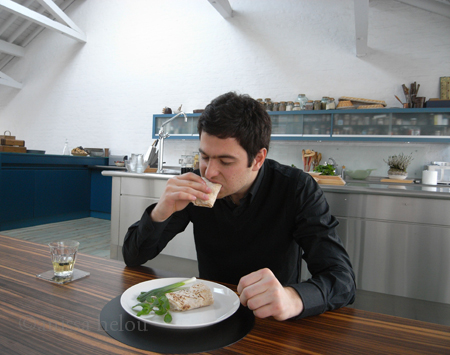31 Jan
When I did my recent post on labneh, I knew that it was well on its way to becoming a global ingredient. What I I didn’t expect was the level of interest the post would generate. It wasn’t so much the comments rather than the questions that I got from various people, including from my new best friend, young Mehran Gharleghi, a very talented young architect. Mehran was curious about labneh. He wanted to learn how to make it, and how to make the ‘bride’ which I had described in my post. So, I proposed a deal: I’d teach him how to make the ‘bride’ if he’d take the pictures for a post. He liked the deal and we arranged a time for him to come over. And as you will see from his photographs, he is also a talented photographer.
So, here is, in pictures, how to make your very own labneh ‘bride’.
First the mise en place. You will need markouk bread, labneh, very good olive oil (mine comes from Mary Taylor Simeti‘s farm and it is fabulous), sea salt, nice olives (I like to use both green & black which I buy from my favourite Lebanese shop, Zen), and fresh mint; as well as trimmed spring onion and Persian cucumbers to serve with the ‘bride’.

The first step is to open up the bread and fold it in half. It is too thin to use in one layer.


Then, put 3-4 tablespoons labneh in the middle of the bread. Season it with salt, drizzle a little olive oil and mix well — like my mother, I use a piece of bread from the thick edge to do this.


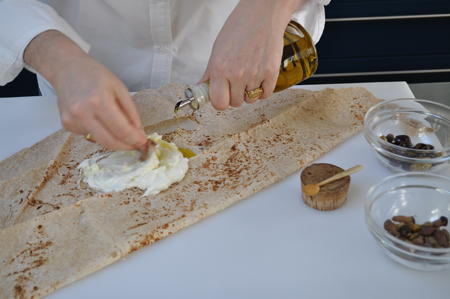
Then, spread the labneh all over the bread.
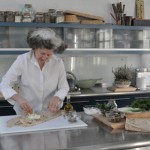



Quickly pit the olives (you can also do this beforehand) and arrange them in a single or double line down the middle — single line if you want your ‘bride’ thin, or double line if you like it wide and flat. À chacun son goût as they say. I normally do a double line for more olives and I arrange the mint leaves in between.


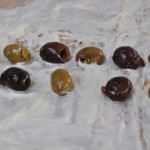
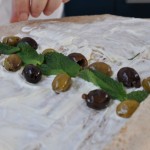
Now you are ready to roll your ‘bride’. My mother rolled it without folding the ends, leaving it to me to make sure that I didn’t let any labneh or olives slip out of the bottom. I prefer to fold a little of the bread both at the top and bottom over the olives to encase them. I also cut off and discard any thick edges on the sides — the markouk I buy in London is not as uniformly thin as the markouk I get in Beirut. Then, pick up one side of the bread and flap it over the olives and mint and roll the ‘bride’.
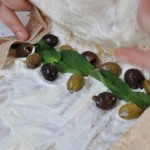
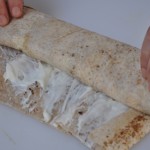
Cut in two halves, on the slant, for a nice presentation, and transfer onto a plate. Garnish with a few sprigs of mint and a couple of trimmed spring onion. Et voila, your very own labneh ‘bride’ which you can vary on by replacing the labneh with an olive oil potato mash flavoured with chopped basil or onion, or feta cheese and mint or whatever takes your fancy.
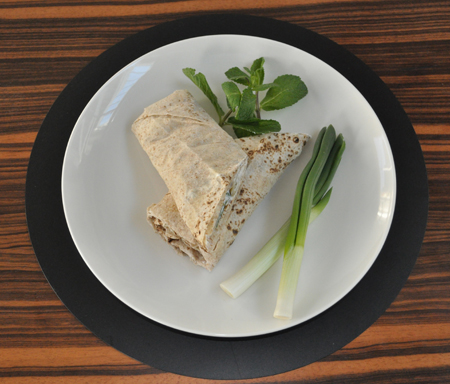

And as you can see, Mehran is very happy with his ‘bride’. I sent him off with a packet of markouk, olives and mint to make his own back home but he didn’t think his was up to scratch. He hadn’t made his own labneh with goat’s yoghurt, and he didn’t have any of Mary’s oil. Now he has both.
